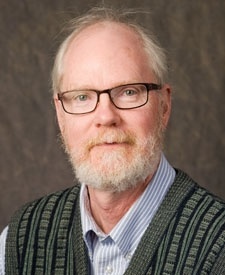
By Gregory Carmichael, Iowa City Press Citizen
We live in a world where digital data is almost as pervasive and unnoticed as the air we breathe. We have become an integral part of the Internet of Things; our personal smart items that we carry with us are sensing the world around us and sharing it with other smart things in our environment including our TV, refrigerator, thermostat, car, bridges — the list is ever growing. The amount of data that is being gathered and exchanged is staggering and growing fast. A billion tweets every 72 hours is one example. Collectively, the amount of data in our digital universe — approximately 5 trillion gigabytes — is doubling every two years.
Big data plays an important role in my research at the University of Iowa, which is focused on how the emissions of pollutants from activities such as cooking, transportation and power generation impact weather, climate and the quality of the air we breathe. Connecting pollution emissions with subsequent human and environmental impacts requires quantifying the sources of pollution emissions and estimating where the pollutants end up geographically. The latter is determined by the weather, the forecast of which we rely on every day and that I use in my research. Predicting the weather requires our fastest supercomputers and utilizes over 500 million observations from over 60 dedicated weather satellites every day.
Knowing the amounts of pollutants emitted — including greenhouse gases — is foundational, as it determines our exposure to air pollution and how much global warming we can expect. Tracking changes in emissions over time is also essential in monitoring the effectiveness of emission reduction policies. For example, the recent Paris climate talks led to nations committing to reduce greenhouse gas emissions by 30 percent by 2030. The actual emission reductions will require independent verification.
Estimating the amounts of pollutants emitted is harder than one may think. Emissions depend on the economic state and the number and types of polluting activities, to name a few. If we look at the pollution emission by motor vehicles, for example, we need the daily number and types of vehicles on the road, how fast they are moving, what fuels they are burning and what pollution control technology is used. Thus, for estimates related to even one source type, large amounts of data are required, much of which is difficult to acquire, let alone claiming their accuracy. Furthermore, there are incentives to game the emissions reporting systems: Some states may consider overstating their current emissions so that achieving targeted percent reductions will be easier, or some producers may consider claiming lower emissions to increase their market share — remember Volkswagen’s "new and improved" diesel engines?
We have increasing capability and capacity to observe pollutants from satellites and the data collected independently informs us about emissions. For example, we have been able to determine when China actually turned on its pollution control technology for large power plants as a result of this observational capacity and data collection, which happened later than officially claimed.
An exciting direction of my work with big data is the possibility to better quantify pollution levels and their societal impacts by figuring out how to use data from unconventional sources, such as the pressure and temperature measured by our mobile phones. This data is beginning to be used to improve weather forecasts. Small, inexpensive pollution sensors are being developed and deployed in mobile phones, in cars and on streetlamp posts and are beginning to provide unprecedented information on pollution levels. For example, my research team is involved in a study in rural India focused on facilitating widespread use of new designs in cook stoves to improve people’s health. Using mobile phones to measure the reductions of black carbon particles indoors and using temperature sensors embedded in the stoves to monitor the actual use of the improved stoves, households can be financially rewarded for their reduced emissions. The integration of the global view from satellites with details provided by the ability of our “things” to measure and communicate provides us powerful new ways of analyzing environmental problems. We provide global public goods, working with partners to collect and aggregate.
Our ability to collect, aggregate and analyze growing amounts of information is not only affecting the way research is conducted, but also the skill sets we need to learn. This is leading to new courses, certificates and degrees at the University of Iowa and is motivating the discussions around adding data and computer science as core concepts and practices for all K-12 students.
However, all is not rosy in this big data world. Each of us carries a personal digital tattoo that is formed by what we digitally touch and are touched by, and these interactions often occur without our knowledge. This fact raises important and difficult privacy and security issues. The recent debates surrounding hacking into an iPhone are just one reminder of the challenges we face.
We welcome you to explore these issues and more by joining us for a WorldCanvass event titled “Big Data: Big Brother or Big Sister?” This event, produced by UI International Programs, will take place at FilmScene at 5 p.m. April 19 as part of a week-long University of Iowa Informatics Showcase. Both events are free and open to the public.
Gregory Carmichael is director of the University of Iowa Informatics Initiative and a professor of chemical and biochemical engineering.